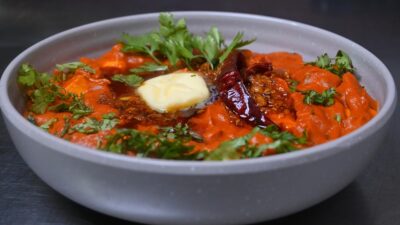In recent years, the digital landscape has seen an astounding rise in various forms of content creation, with food vlogging emerging as a particularly vibrant and influential genre. Food vlogging, the practice of sharing culinary experiences through video, has not just transformed how recipes are shared and meals are prepared; it has also played a pivotal role in building vibrant culinary communities across the globe.
The Essence of Food Vlogging
At its core, food vlogging marries the art of storytelling with the science of cooking. Vloggers leverage platforms like YouTube, Instagram, and TikTok to showcase their culinary journeys, share recipes, and indulge in food culture. These short or long-form videos often blend personal anecdotes, instructional content, and visually stunning food photography, creating a multisensory experience that appeals to viewers far beyond simple meal preparation.
Accessibility and Diversity
One of the strongest impacts of food vlogging is its ability to democratize culinary knowledge. Traditional cooking shows often feature professional chefs in well-equipped kitchens, which can feel unattainable for many home cooks. In contrast, food vloggers—who often come from diverse backgrounds—offer an accessible and relatable approach to cooking. Viewers can find recipes that suit their cultural backgrounds, dietary restrictions, and skill levels.
Furthermore, food vlogging showcases a wide range of cuisines, promoting cultural exchange and understanding. A viewer in a city with limited access to international grocery stores can learn to cook authentic dishes from around the world, fostering a greater appreciation for diverse culinary traditions.
Building Community Through Connection
Food vlogging doesn’t just end with the video. It builds communities of like-minded food enthusiasts who actively engage with content and each other. Comments sections, social media interactions, and live streams facilitate real-time conversations, allowing followers to exchange tips, share their own culinary successes, and even connect on a personal level.
Local and Global Connections
Through food vlogging, viewers often form connections that transcend geographical boundaries. A vegan baker in New York can find a supportive community of fellow vegans in Australia, sharing their challenges and triumphs in recreating beloved recipes. At the same time, local communities can rally around food vloggers who highlight regional ingredients and traditional cuisines, helping to promote local farmers and artisans.
Moreover, food-based challenges and collaborations between vloggers can bring enthusiasts together to share experiences and foster camaraderie, making food a profound unifying force.
Education and Inspiration
Educational content is another cornerstone of food vlogging. Many vloggers incorporate tutorials, cooking hacks, and informational segments about the science behind ingredients. This empowers viewers to enhance their culinary skills while diving deeper into the world of food and nutrition. Whether it’s a detailed breakdown of how to properly sear a steak or simple tips for meal prepping, educational elements serve to inspire a generation of home cooks.
Sustainable Practices and Ethical Eating
With a growing emphasis on sustainability and ethical eating, many food vloggers are leading the charge by sharing tips on how to reduce waste, choose seasonal ingredients, and explore plant-based options. These discussions encourage viewers to be more mindful of their food choices, thereby promoting sustainable practices within the culinary community.
Challenges and Opportunities
Despite its many benefits, food vlogging also faces challenges. The sheer volume of content can sometimes lead to misinformation or trends that prioritize aesthetics over the actual culinary experience. However, these challenges provide opportunities for responsible creators to rise above the noise and establish themselves as trustworthy sources.
The Future of Food Vlogging
As technology continues to evolve, so too will the ways in which food vloggers create and share content. Virtual reality and augmented reality may soon allow viewers to immerse themselves in the cooking experience, bridging the gap between screen and kitchen. The rise of AI-generated content also elevates questions about authenticity and the essence of personal storytelling in food vlogging.
Conclusion
Food vlogging represents more than just a trend—it’s a dynamic movement that collects people around the universal love of food. By creating accessible content, fostering connection, promoting sustainability, and providing educational resources, food vloggers play an essential role in shaping modern culinary communities. As this genre continues to grow and evolve, its potential to influence how we cook, eat, and connect with each other will only deepen, making it an invaluable aspect of our society.



